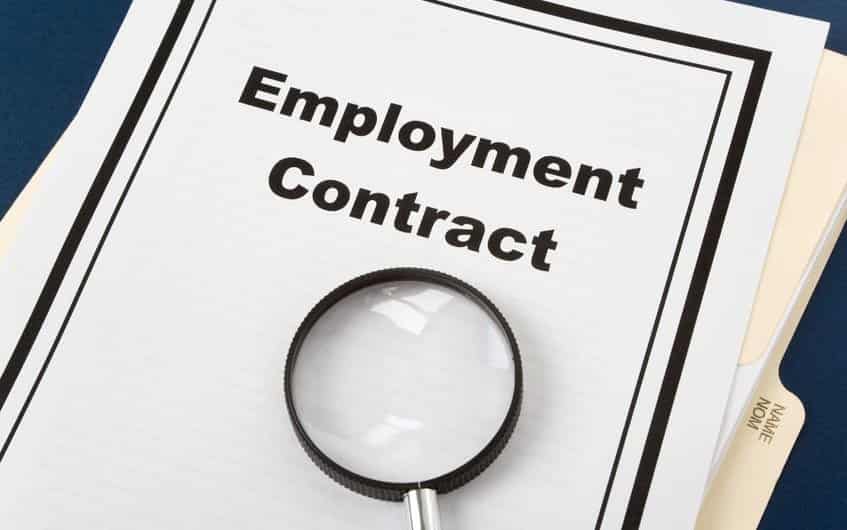As your small business expands, you might be considering changing your business structure from a sole trader to a partnership.
By changing your business structure to a partnership, your business partner can help you manage and expand your business while bringing their own expertise along with them.
Read this article to find out how to change your business structure from a sole trader to a partnership.
Table of Contents
Sole Trader vs Partnership: What’s The Difference
A sole trader business is a business that’s owned and operated by a single person. Whereas a partnership is a business between two or more people who operate the business together. It’s important to note that sole traders and general partnerships have unlimited liability, unlike a company structure.
The benefit of a company structure is that a company is a separate legal entity that exists separately from its owners and employees.
When you’re a partner in a partnership, you’ll be personally liable for the obligations of your business, subject to the partnership agreement. It’s also important to note that partners in a general partnership have equal shares of the business’s losses and income.
Additionally, partners act on behalf of each other. Therefore, partners are liable for the actions of their partners.
You should also be aware that when your business is registered as a company, your business is accountable to the Australian Securities and Investments Commission (ASIC) as opposed to just the Australian Taxation Office (ATO) for partnerships and sole traders.
Partnerships can survive the death of a partner, subject to the agreement, whereas a sole trader business ends if the owner of the sole trader passes away.
Table of Contents
What are the benefits of changing from a Sole trader to a Partnership?
There are many reasons that you may wish to change your business structure. These include the following:
- A partnership is beneficial if you want to bring someone on to help run the business and if it better reflects your business needs. For example, if your business has an equity investor who wants some control, a partnership structure would be more beneficial than a sole trader structure
- If your business is going through substantial growth, a partnership structure would be a great way to distribute liability
- A partnership structure would also be useful if you want to reduce your individual workload by sharing it with others
- You can use a partnership structure to grow your business quickly by collaborating with others who have expertise in different areas, different skills, contacts and who can provide additional funds to the business
- If you want to avoid unlimited liability, you can choose to use a limited liability partnership structure instead of a general partnership structure. The benefit of using a limited liability structure is that the liability of each partner depends on the amount of capital they have invested in the partnership their capital investment in the partnership
How to change from a sole trader to a partnership?
You will need to complete the following to change your legal structure from a sole trader to a partnership:
- You must choose a business partner or partners
- You and your business and partners should create a partnership agreement that outlines how the business will be operated and managed
- When you change your business structure from a sole trader to a partnership, you will be required to register a new Australian Business Number (ABN)
- You should get your new business name registered with the ASIC. However, if you intend to trade under the partners’ names, you won’t need to register a business name. Furthermore, if you plan to keep your business name when changing your business structure from a sole trader to a partnership, you’ll be required to transfer the business name through the Australian Business Register(ABR), and you’ll be provided with a new business number instead
- You must also inform the ATO regarding changes to your business within 28 days.
- In regards to tax obligations, you must register your partnership with the ATO and obtain a tax file number (TFN)
- You will need to register for GST if your partnership makes over $75,000 in annual revenue
- If you plan to have employees, you should consider pay-as-you-go (PAYG) withholding
- You should create a bank account for your partnership
- You should obtain the licences and registrations your business is required to have to operate. This will depend on the type of business you have
- You should be aware that using a limited liability partnership structure will require you to register the partnership with ASIC
Key obligations when changing from a sole trader to a partnership
- You will be required to lodge a tax return with the ATO annually
- You should be aware that as a partner in the partnership, you need to make your own arrangements for superannuation
- Business capital that is transferred to the partnership by any partner must be declared in the annual tax return
- After you change your business structure from a sole trader to a partnership, you should make sure that any promotional material you have used for your business is updated to include the new or modified partnership name
- You should also make sure to update any draft contracts that have been created for your business to include the partnership name
What is the purpose of a partnership agreement?
A partnership agreement is a crucial document for every partnership as it can be used to manage the relationships between the partners of your business and outline the rights each partner has. You can include important information about your partnership business in the partnership agreement, including the following:
- The name of your partnership
- The business address
- The responsibilities each partner has
- The dispute resolution methods to be used
- How the partnership can be dissolved
- Each partner’s name
- The limitations of each partner
A partnership agreement will help you mitigate and resolve potential issues that you will encounter in running your business.
What should you look for in a business partner?
Choosing the right business partner for your partnership is one of the most crucial aspects when changing from a sole trader to a partnership. You have spent a lot of time and put in a lot of effort in building your business, so it may be difficult to get used to another person making decisions for your business. Therefore, you need to have a good conversation with the person you are considering going into partnership with and make sure that you can trust your business partner.
You should find out what their vision and expectations for the business are to ensure you’re both on the same page. You should not choose your business partner in a rush as it’s worth taking your time in deciding on a new partner as you will be working together extensively in the future. After you have chosen a business partner, you should read our article for tips on how to negotiate a partnership agreement.
Conclusion
Changing your business structure from a sole trader structure to a partnership structure is a significant change. If you’re still feeling unsure about how to change your business structure or whether a partnership is the right business structure for your small business, you should hire a lawyer from Lawpath.




